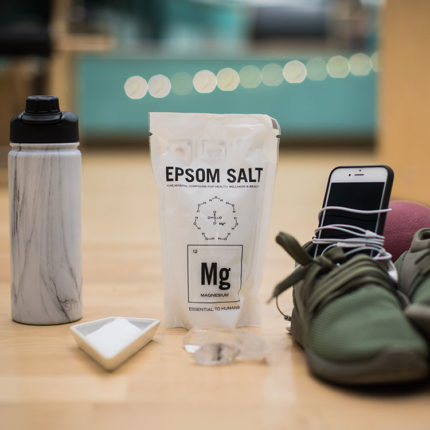The number of flotation centers has surged nationwide, a spike fueled by spa-goers, sports superstars and medical researchers exploring the health benefits of flotation therapy and magnesium sulfate.
An industry report shows that 149 centers have opened since 2011, and 222 more businesses plan to open in the next two years.
By comparison, of all the other centers in operation today, only about 25 opened in the previous quarter century, according to a survey of tank owners that’s included in the report.
While spas have added float tanks, so have workout gyms and locker rooms. Professional MVPs such as Steph Curry and Tom Brady often float to help sore muscles recover, for example. The New England Patriots even installed two tanks in their stadium for the team to use.
“Flotation is getting adopted because our world is becoming an increasingly stressful place,” said Graham Talley, co-founder of Float On, an industry leader that organizes an annual conference for float tank owners.
“The tanks force people to slow down and pause rather than pushing faster and faster,” Talley said. “After people float, we hear them say all the time, ‘I can’t remember the last time I felt this relaxed.’”
Here’s how floating works: visitors enter a chamber filled with nearly a foot of water and about 1,000 pounds of Epsom salt. That much Epsom salt creates buoyancy, much like the Dead Sea, so people can float on the surface with no effort.
Float tanks range in size, from open, 8-foot diameter circular pools with no lid to enclosed pods that are roughly 8-feet long, 5.5-feet wide and 7-feet tall. In the pods, you can leave the door open, but many choose to close it and turn off the light on the inside: no sound, no light, water and air temperatures that mirror your skin, and almost no perceived gravity.
People float for 60- to 90-minutes. When the sessions end, most emerge feeling rested and grateful that their brains have enjoyed a break. Many say that time in the tank helps boost creativity.
The medical benefits, though, have increasingly intrigued researchers.
Military groups are recruiting veterans struggling with PTSD to float in the tanks. A child development center has used the tanks to help autistic children. And the Laureate Institute for Brain Research (LIBR) – the nation’s only clinical neuroscience research center that uses a flotation tank – has been studying whether it can help with anxiety and depression. Justin Feinstein, Ph.D., director of the Float Clinic and Research Center states, “We know we’re getting a clinical change. The question is ‘How is this working?’”
The preliminary data is promising.
Many believe the success stems from the combination of sensory deprivation and the 1,000 pounds of Epsom salt, or magnesium sulfate. “Magnesium absorbs through the skin, so floating is a good way to get magnesium saturation,” said Dr. Carolyn Dean, M.D. N.D., a fan of float tanks who is also one of the nation’s top natural physicians and a member of the nonprofit Nutritional Magnesium Association’s medical advisory board.
Magnesium helps regulate the activity of more than 600 enzymes in the body, (de Baaij JHF, et. al. “Magnesium in Man: Implications for Health and Disease” Physiological Reviews. Jan 1, 2015 Vol. 95 no. 1, 1-46.) and not having enough can contribute to high blood pressure, anxiety, hyperactivity, heart problems, and other health issues, doctors warn. But most Americans do not get enough magnesium from their diets, according to one of the world's leading magnesium researchers.





